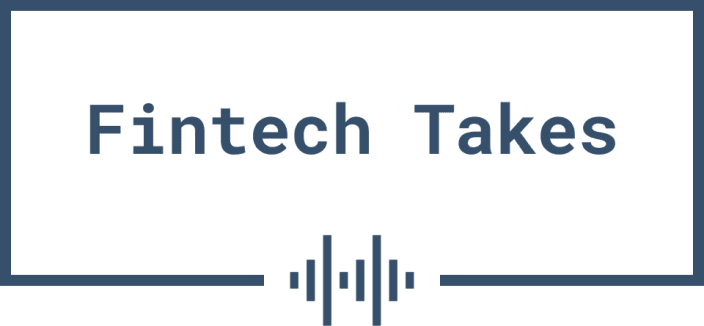I have spent the last few days at an event in Washington, D.C., with some of my favorite fintech and financial services policy friends, discussing inclusive finance.
In keeping with our tradition around here, I would like to empty my notebook of all the random observations, insights, and questions from this event.
More coherent analysis will come later. Today is just a brain dump.

Income – Expense Misalignment is a Coordination Problem
This isn’t a shocking revelation or anything, but a consistent theme in all the conversations at this event has been the challenge that many consumers in a financially precarious position have in aligning their income (which is increasingly fractured across multiple jobs/gigs/side hustles) and their expenses (which are increasingly being restructured as subscriptions). Creating and maintaining this alignment is extremely difficult. It can be easily disrupted by unexpected expenses or drops in income, which has devastating knock-on effects for consumers.
Here’s the thing, though — it’s not in anyone’s interest for a consumer’s income and expenses to be misaligned. Obviously, that includes the consumer. However, it also includes billers (having to disconnect a subscriber’s service is their worst-case outcome), lenders (collections is their worst-case scenario), banks (assuming they aren’t trying to maximize profits off accidental overdrafts), and employers (they don’t want their employees to be stressed or distracted).
Oftentimes, it is possible for consumers to manage cash flow disruptions by negotiating with all of the parties involved in their finances (e.g., lenders and billers restructuring payment plans, banks providing emergency liquidity, employers advancing wages, etc.). However, the level of work required is immense, and often, consumers don’t even realize that these options are available to them.
There’s no reason we can’t build the infrastructure to automatically facilitate proactive cash flow smoothing for consumers by connecting together their various employers, billers, banks, and lenders. The math is fairly straightforward, and the incentives are (mostly) there. It’s just a coordination problem.
I would love it if financial services regulators made solving this coordination problem a priority in the coming years.
To Define a Predator
How do you define a predatory financial services provider?
Here’s an answer that I heard, which I absolutely loved — If you profit more when a customer fails than when they succeed, you are a predatory financial services provider.
Yes! That is excellent! I’m going to be leaning on this definition a lot moving forward!
A Nuanced Look at Fintech’s Impact on Financial Health
Earlier this week, I participated in a webinar hosted by SaverLife, a nonprofit and advocacy organization that uses technology to improve the financial health of people living on low-to-moderate incomes.
In the webinar, we discussed some research that SaverLife has been doing on fintech’s impact on low-to-moderate-income consumers’ financial health and stability.
I would highly encourage you to check out the research yourself (one report has already been released, and the next one will be available soon), but one of the top-line conclusions that I found fascinating was that consumers who use fintech products (digital banking, BNPL, EWA, cash advance, etc.) tend to be in more financially precarious positions, but are also quite satisfied with the fintech providers they work with.
It’s a good reminder that the “fintech is good/fintech is bad” dichotomy that shows up in a lot of our discourse is dumb. Consumers are complex!
How Do You Balance Protecting Consumers and Respecting Consumers?
Related to the point above, a fascinating question that has come up multiple times in the last few days is, How do you balance protecting consumers and respecting their decisions?
This question doesn’t have an easy answer. It requires us to make trade-offs.
Should we protect consumers completely from scams, even if it means restricting their ability to access and move their own money? Should we protect consumers from paying excessive amounts of interest on revolving credit card balances, even if it means reducing access to credit cards for other consumers?
The goal of sound public policy should be to strike a balance between these extremes. However, it’s very difficult to get folks to agree on exactly where that balance point should be!
The Irony of Opposing Debanking *and* DEI
I can’t emphasize enough how disruptive the Trump Administration’s chaotic war against DEI and “wasteful” government spending has been for financial services policy and non-profit folks.
I’ve spoken to multiple groups that have lost grants or other funding sources. As you might imagine, these were not carefully considered decisions, communicated with plenty of advance notice. Organizations are getting single-sentence emails out of the blue, telling them that their funding is being cut or suspended.
The depressing irony is that a lot of these organizations are doing the exact work that this administration claims it wants to advance.
Debanking is a good example.
It turns out that a lot of the work that is being done on the ground to fight debanking and to ensure that everyone has fair access to affordable, mainstream financial products and services is being done by organizations that have words like “diversity,” “equity,” and “inclusion” in their names. Instead of trying to understand what these organizations actually do and how efficiently they convert money into socially useful outcomes (like banking unbanked households or lending to first-time homebuyers), the people in charge are seemingly just playing DEI word search Whack-a-mole.
It would be best for everyone if they put down their mallet and picked up a scalpel. There are more effective ways to accomplish all of their goals.
Where is the Line Between Wealth Building and Speculation?
Crypto has been another big topic this week.
Predictably, it’s a subject that divides the financial inclusion community. Most seem to agree that the Biden Administration’s approach to crypto (ignore it and hope it goes away) was a mistake. However, when it comes to how crypto should be regulated moving forward and what role crypto can have in helping consumers improve their financial health and build wealth, there’s much less agreement.
I’m not sure what I think, TBH.
According to research from Pew and the FDIC, a relatively small percentage of U.S. adults have ever invested, traded, or used a cryptocurrency (that percentage has likely increased a bit since the election of President Trump). This group tends to skew towards the upper end of the income scale. According to Pew:
Among adults in upper-income households, 23% have ever invested in, traded or used cryptocurrency. This share decreases to 18% among middle-income Americans and further to 14% among those with lower incomes.
Here’s my question: How does that distribution by income change when you look at different categories of cryptocurrencies?
My guess is that ownership of mature, less volatile assets like Bitcoin skews toward the upper-income brackets, while ownership of memecoins skews toward the lower-income brackets.
Faster Time-to-Money Creates Opportunities
I’ve always liked earned wage access (assuming you don’t ask for tips!), but I had never considered how speeding up time-to-money for individual employees can create more economic opportunities for those employees.
Here’s an example of what this can look like — An hourly fast food worker has the option to pick up more shifts and make more money. Her schedule can accommodate these extra shifts, but she has to drive to her job, and she doesn’t have enough money to fill up her car with gas. By giving her immediate access to a portion of her wages from her last shift, she can afford to buy the gas and pick up the extra shifts.
This is an obviously good outcome, facilitated by EWA, and I’m not sure why I hadn’t thought of it before!
An AI “Caddy”
Unsurprisingly, the financial inclusion community is thinking a lot about agentic AI.
Here’s an analogy I heard, which I really liked — an effective personal finance AI agent is like a caddy for consumers. It does a lot of the grunt work that you shouldn’t be wasting energy on, helps you assess situations, advises you on high-stakes decisions, and its mere presence helps discourage some of your more reckless impulses.
I love this, and I am confident that there are folks out there building this right now (I’d love to see demos!)
Financial Health and Inclusion Sit Downstream of Business Models
A sentiment that I’ve heard expressed multiple times in the last couple of days is that you can’t divorce the goal of improving financial health and inclusion from the business imperative to make money.
In other words, financial health and inclusion can’t be a cost center.
The good news is that it doesn’t have to be. You just have to ensure that the business models of the companies pursuing these goals are aligned because, as I am fond of saying around here, you are your business model.
A Quick Thank You!
I want to end by expressing my appreciation to the folks who are working on improving financial outcomes for consumers, especially those who are trying to do so while working within large banks and other incumbent financial services providers.
It’s tough to work for companies that have indifferent (or sometimes bad) track records when it comes to treating customers fairly and helping them live financially healthier lives. I’m sure it can feel like a Sisyphean task to push those initiatives forward, but I want the people doing this work to know that I see them and appreciate them!


